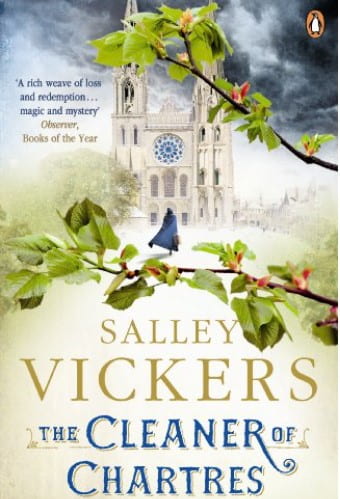I can’t remember how this book came to my attention because it was enjoyable, almost a holiday read but not fantastic.
Agnes Morel has had a difficult life. Found abandoned in a forest by a farmer, she was eventually handed in to Nuns where she grew up in a convent, mistreated by some and loved by others. At the age of 15 she was raped and had a baby who was taken away from her the minute it was born. And it is this fact that drives the rest of the book – where is her baby, Gabriel as she named him? Following the birth, she had a breakdown and attacked a nanny that was looking after a little boy that she thought was her own child.
On recovering, she hitched to Chartres and eventually created a life for herself through her kindness and willingness to help and clean for others. In doing so, she developed many friendships in the town that in the end saved her from being charged with a crime she didn’t commit.
Whilst many characters in the book are friends of Agnes, there are a couple who are very unpleasant – Madame Beck who causes a whole lot of grief and ends up being connected to Agnes and Sister Veronique from the Convent. Both these women are malicious and stir problems up through their gossip and letter writing. They highlight, I think, one of the aims of the book to show the dark and light of humans. At the heart of Agnes are dark secrets although they do eventually see the light of day.
Throughout the book, a relationship develops between Agnes and the restorer who is working on the Cathedral’s paintings up on scaffolding. It moves along slowly through the book but becomes very rushed and sorted at the end – a little too tidy I think.
It isn’t that often the you come across words you have never heard of before but I did in this book and it stood out a little bit – coterminously,
An incipient vanity bloomed in Claude Beck alongside his enterprise. His eye, never too faithful in the first place, began to rove more widely and conspicuously. Coterminously, his wife began to lose her looks.
p83
Why doesn’t it just say ‘at the same time’ or leave it out altogether?
This is one of those books where food is detailed. Meals are described as is the drink and all are good, especially the wine drunk by the doctor who felt that he had let Agnes down. The food when Agnes lived on a farm with her ‘father’ is of cheese, cream, mushrooms and rabbit – it was after all in Normandy. The food she eats with Father Paul is simple but comforting. The stale biscuits that Madame Beck shared with her friend say it all.
I wasn’t really sure when this book was set? At first I thought 1950s/60s because of the horror of unmarried mothers having babies and babies being given up or taken away by the church. But later in the book, the dialogue with Alain, the restorer of the cathedral, is much more modern and they pay for a meal in euros so I am still a little confused about the era.
Enjoyable but not earth-shattering.
